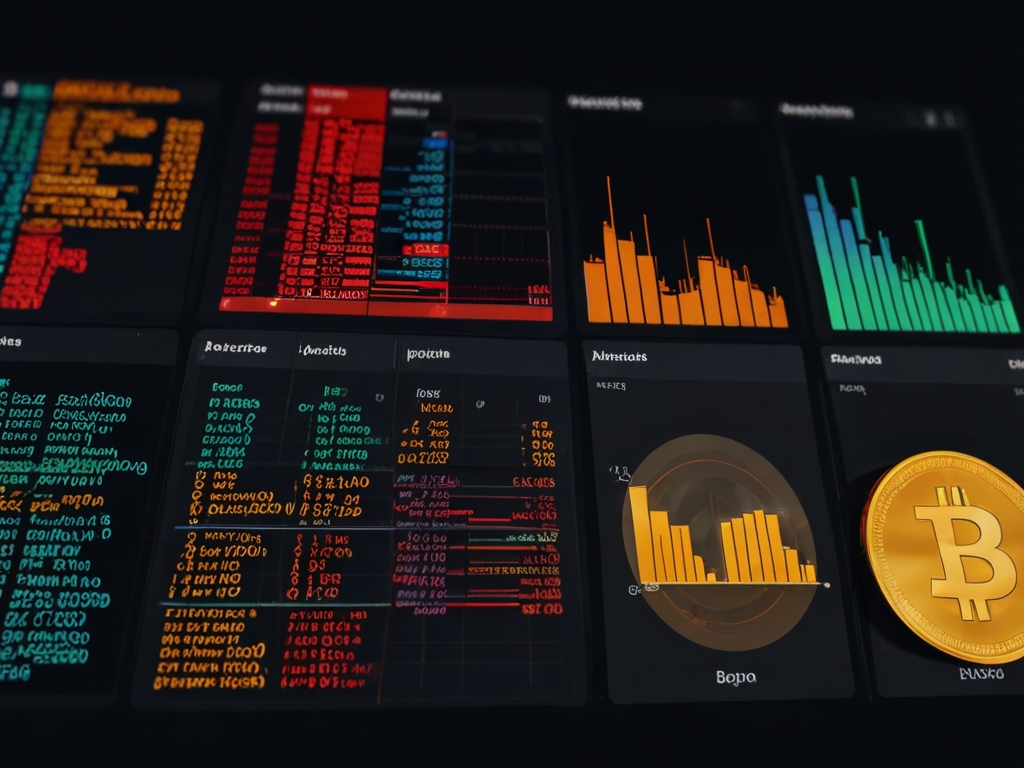
Blockworks tracks 5-6 assets, not just top 2. Aptos, Avalanche, Tron in the mix!
Date: 2025-05-21 12:07:56 | By Eleanor Finch
Are Crypto Valuations Out of Touch with Reality? A Deep Dive into Layer 1 Assets
In the fast-paced world of cryptocurrency, the debate over how to accurately value digital assets rages on. Recent analyses by Blockworks on a select group of Layer 1 cryptocurrencies have sparked discussions about whether these assets are overvalued, or if traditional valuation metrics are missing key components. As we delve into the data on Aptos, Avalanche, and Tron, the picture that emerges is one of both caution and optimism, challenging investors to rethink their strategies in a market known for its volatility.
Peering into the Valuation Multiples
Blockworks' analysis focused on the multiples between the annualized revenue and the actual market price of these cryptocurrencies at their peak. For instance, Aptos was trading at a staggering 1,000 times its annualized revenue, while Tron stood at a more modest 48 times. Avalanche, on the other hand, was at a whopping 136 times its revenue. These figures raise eyebrows, suggesting that the market might be pricing in a significant amount of future growth. "It's like we're squinting and trying to see the future," remarked a market analyst. "These valuations are betting on a lot of potential, perhaps too much."
The Utility and Intrinsic Value Debate
The question of utility and intrinsic value is central to understanding these valuations. If the utility of these Layer 1 assets is the driving force behind their value, then the current prices might be justified. However, the disconnect between revenue and market price suggests that other factors are at play. "Revenue is just one part of the equation," explains a crypto economist. "We might be missing other critical components like network effects, technological advancements, and regulatory developments."
Reimagining the Valuation Model
The traditional discounted cash flow (DCF) model, commonly used in valuing companies, seems inadequate when applied to cryptocurrencies. The analogy of the three blind men feeling different parts of an elephant illustrates this challenge perfectly. One feels the tail and thinks it's a rope, another feels the trunk and thinks it's a snake. Similarly, focusing solely on revenue might give us a skewed perspective. "We've got revenue nailed down," says a financial analyst. "But it's just setting the floor. We need to look at the bigger picture."
The broader implication is that the global equation for valuing Layer 1 assets needs to be more comprehensive. As the market evolves, so too must our valuation models. Experts predict that integrating factors like user adoption rates, transaction volumes, and even sentiment analysis could provide a more holistic view. "We're in uncharted territory," notes a blockchain researcher. "But that's what makes this space so exciting."
Looking ahead, the consensus among experts is that while some cryptocurrencies may be overvalued, the market's optimism is not entirely misplaced. "There's a lot of growth potential," says a venture capitalist specializing in blockchain technology. "But investors need to be cautious and look beyond the numbers."
As the crypto market continues to mature, the debate over valuation will undoubtedly persist. For now, the key takeaway is clear: understanding the full spectrum of factors that contribute to a cryptocurrency's value is crucial. Whether these assets are overvalued or not, the journey to find the right valuation model is as thrilling as the assets themselves.

Disclaimer
The information provided on HotFart is for general informational purposes only. All information on the site is provided in good faith, however we make no representation or warranty of any kind, express or implied, regarding the accuracy, adequacy, validity, reliability, availability or completeness of any information on the site.
 10
10  0
0  OTHER
OTHER
Comments (0)
Please Log In to leave a comment.